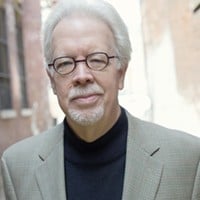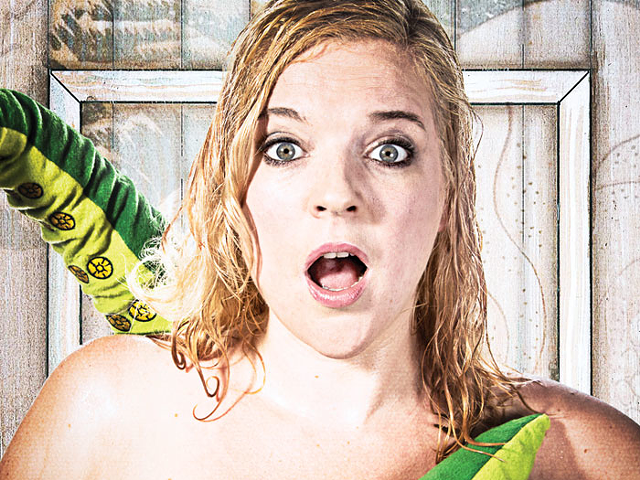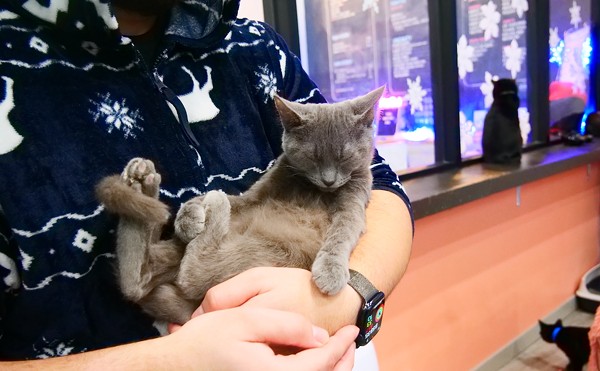When I started writing about Cincinnati theater in the late 1980s, there wasn’t much beyond the Playhouse and Ensemble Theatre. But starting in 1994 (the same year CityBeat began), things began to heat up with the arrival of Fahrenheit Theatre Company. After two seasons, it evolved into the Cincinnati Shakespeare Festival, the forerunner of today’s Cincinnati Shakespeare Company, currently engaged in building a new $17 million facility in Over-the-Rhine.
The most visible driving force behind Fahrenheit and Cincinnati Shakespeare was Jasson Minadakis, the company’s artistic director. This summer I’m reporting on theater professionals who have spent time locally, starting with the guy I once called the “Energizer Bunny” of Cincinnati theater.
Minadakis is now in his 10th season leading Marin Theatre Company in Mill Valley, Calif., north of San Francisco.
But he began his career in Cincinnati.
“I accepted a directing internship at Ensemble Theatre for the 1993-94 season,” he says. “I was interested in getting to know the city and the arts community because I was looking to start a theater company with some college friends from James Madison University in Virginia — Marni Penning, Nick Rose and Ceeko Scheeren.”
They decided Cincinnati was fertile ground for a company producing classics and new works. Fahrenheit’s first season included Shakespeare’s Taming of the Shrew, Julius Caesar and Twelfth Night; an adaptation of the medieval English epic Beowulf; and a new play by Stacy Jordan Pershall, The Color Wheel.
After several temporary venues, Minadakis and his company eventually found a space once occupied by a repertory cinema downtown on Race Street. When it decamps for Over-the-Rhine next summer, the company will have spent 16 seasons there. Minadakis departed at the end of 2002.
“Producing new plays, specifically new American plays, was becoming my core focus and the center of my interest,” he says. “I had a strong desire to stage work that was responsive to the events unfolding in Cincinnati and across the country. New work was integral to the founding of Fahrenheit, but it took a less prominent role when we became Cincinnati Shakespeare Festival.”
He sought to balance classics and new works. “That turned out not to be an ideal formula for the organization,” he says. “I ultimately had to make a decision about whether or not it was the right home for the work I needed to produce.”
Early in 2003, Minadakis was named artistic director of Actor’s Express in Atlanta, where he reinvigorated its involvement with the National New Play Network. In 2006, he moved to the West Coast as the artistic leader at Marin Theatre Company.
“I’ve been lucky enough to produce some amazing new work,” he says. At Marin, he has overseen productions of three winners of the prestigious Steinberg/American Theatre Critics Association New Play awards for two works by Bill Cain (Equivocation in 2010 and 9 Circles in 2011).
Cincinnati Shakespeare’s evolution also has been positive, he says. “We made the right choices in the end,” he says. “By focusing on Shakespeare and the classics, (it) has grown in remarkable ways. And I have been able to focus on creating and supporting new American work in my subsequent career.”
Minadakis is proud of his eight seasons in Cincinnati. He produced 70 shows and directed 37 of them. The company’s budget grew from $17,500 to $720,000. He also played a key role in launching the League of Cincinnati Theatres.
“We brought many talented artists to Cincinnati,” he says. “It’s been amazing to watch them create lives in the city and become leaders in the arts community.”
Minadakis was one of the spark plugs that fired up the local theater scene. “It was an amazing decade with the start of so many new companies, many of which are still producing,” he says. “It was a very troubled time for the city, socially and politically, and it was a challenge to create work that entertained while simultaneously responded to events happening in the community. But it was that developing intersection of art, community activism and social justice that informed and guided the ensuing 14 years of my artistic career.”
CONTACT RICK PENDER: [email protected]







